The myTrestle Button Makes Conscious Consumerism Easier


Last month, Trestle, a Portland-based technology company, announced the release of the myTrestle web browser button. The button is a plug-in currently available for the Google Chrome web browser, allowing users to learn about a company’s sustainability practices while shopping for their favorite products online.
Conscious consumerism is growing. Although millennials are not solely responsible for the growth of the movement, they are driving the conversation, according to many analyses including this one on Forbes. While millennials generally have less to spend than the previous generations due to lower earnings, fewer assets and less wealth, the group is 73 percent more likely to spend more money on products with a proven sustainability track record.
A 2019 analysis by Shopify, a leading commerce platform for entrepreneurs to start, grow and manage a business, also identified transparency and corporate social responsibility as key trends for growth in a rapidly changing retail environment.
The challenges of conscious consumerism
While many consumers say they want to be more socially conscious while shopping, there are challenges. For one, it’s often difficult to tell what claims are true. An ongoing challenge, long coined “greenwashing,” is the practice of promoting false or misleading environmental claims through a brand’s marketing and PR efforts. With the rise in online shopping and the plethora of brands to choose from, it has become incredibly time-consuming for shoppers to research the veracity of product claims and what companies truly share their values.
That is where the myTrestle button comes in. According to the company, the myTrestle button draws from extensive research and data to provide a snapshot of a company’s environmental, labor and animal practices. Trestle says that the button can also be used to inform customers if the product they are shopping for is made in the United States, uses organic materials, and to what degree the company operates with transparency. Dedicated to making conscious consumerism convenient, Trestle aims to aggregate the data that consumers need to make smart shopping decisions – a huge task that other technology companies are taking on.
For example, another app that can help fashionistas who are interested in the sustainability of what they wear is Good on You, which challenges consumers to “Wear the change you want to see.” Good on You looks at brands’ impact on workers in their supply chain, environmental impact and their use of animal products. There is a five-point ranking system, from “Great” to “Not Good Enough” and “We Avoid.”
What the future of conscious consumerism could hold
As the conscious consumerism movement continues to grow, technology-based tools like the myTrestle button and Good on You could become increasingly more common and important to shoppers. Access to data and aggregated information are key to consumers who want to make the best possible and informed shopping decisions.
In a pitch presented by Trestle Co-Founder Jennifer Johnson at the Portland Incubator Experiment Demo Day earlier this year, she urged both consumers and the media to use tools like myTrestle for shopping, spreading awareness and education. As Johnson other sustainability leaders have made clear, in talking about our values and sharing resources, we can all play a part in pushing a more sustainable economy forward.
Image credit: Rupixen/Unsplash
Groundbreaking Rhino Bonds Seek to Save Endangered Species


The world’s two remaining northern white rhinoceros are confined to a Kenyan conservancy, protected round-the-clock by armed guards. To help prevent their sister species, the endangered black rhino, from facing a similar fate, conservationists are trialing a radical new approach to fundraising: rhino impact bonds.
With black rhino numbers plummeting from 65,000 in 1970 to around 5,500 today, the Rhino Impact Investment (RII) Project seeks to mobilize capital to better protect the species from escalating poaching and habitat loss. Its backers hope the first-of-its-kind conservation finance model will draw strong interest from impact investors and prove replicable for other endangered species. Several prominent wildlife charities, led by the Zoological Society of London (ZSL) and the Royal Foundation, incubated the initiative, which is nearing the end of three years of development and testing. The Global Environment Facility and U.K. government are also backing the $50 million bond, which will launch early in 2020.
“Creative ideas for generating more efficient, more impactful, success-driven conservation finance must be designed, tried and tested: The RII Project is doing just that,” says Giles Davies, founder of Conservation Capital, the consultancy acting as RII’s Finance Manager. “[The rhino impact bond] holds significant potential for creating an exciting new asset class capable of engaging new and more diversified capital markets into the conservation sector.”
How rhino bonds works
ZSL and its partners seek to tap into the rapidly growing green bond market that has grown in its first decade to surpass $100 billion in value. As with other green bonds, the rhino impact model will function as a debt instrument, unlocking investment capital to (hopefully) drive black rhino gains in five key population areas in South Africa and Kenya. Together, these protected areas house 700 beleaguered black rhinos.
Money raised from impact investors will finance on-the-ground management interventions that support rhino conservation and maximize growth rates. Investors will receive back their original investment, plus or minus a percentage based on whether or not conservation key performance indicators such as “net rhino growth” are met.
A part of Tsavo West National Park in Kenya has served as a testing ground for interventions that are expected to provide effective metrics and deliver positive outcomes for rhinos and investors alike. In collaboration with the Kenya Wildlife Service, the RII Project has supported improvements in security, wildlife monitoring, park operations, community engagement and infrastructure — including replacing a water pipeline that supplies half the local rhino population.
Future potential for outcomes-driven fundraising
Dr. Richard Leakey, chairman of the Kenya Wildlife Service Board, sees immense potential in the outcomes-driven fundraising model. “We’ve seen some incredible progress since the start of the RII Project, and the momentum that is gathering will help restore this landscape to the major wildlife area that it was in the 1950s.”
His optimism is shared by Oliver Withers, ZSL’s head of conservation finance and enterprise, who sees the rhino bond as a first step toward mobilizing markets to protect the world’s dwindling biodiversity. “We see this as a shift in the conservation-funding model,” he told Bloomberg. “There is huge scope for this [model] to be used for other species.”
Whether they are proved right will depend in part on the scale of uptake when the bond launches. Given the surge of interest in impact investing among high-net-worth individuals, and the iconic status of rhinos, their bet may well pay off. (Nearly 80 percent of high-net-worth millennials, and 60 percent of Generation Xers own or are considering impact investments). In which case, rhino impact bonds will join other innovative efforts to sustain Africa’s wildlife — and not a moment too soon.
Image credit: Alberto Frías/Unsplash
New Waste-to-Energy Technologies Can Benefit Business
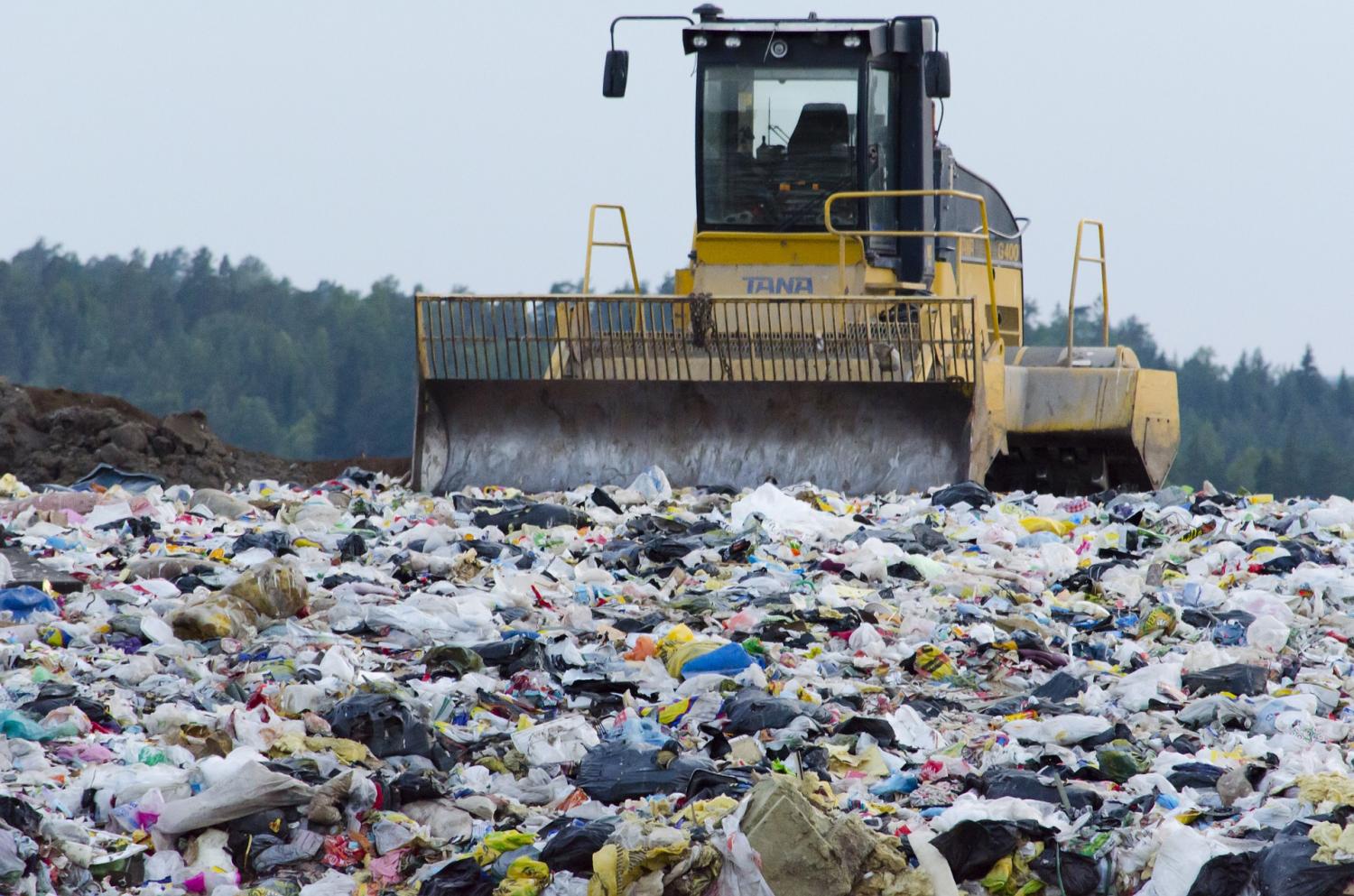
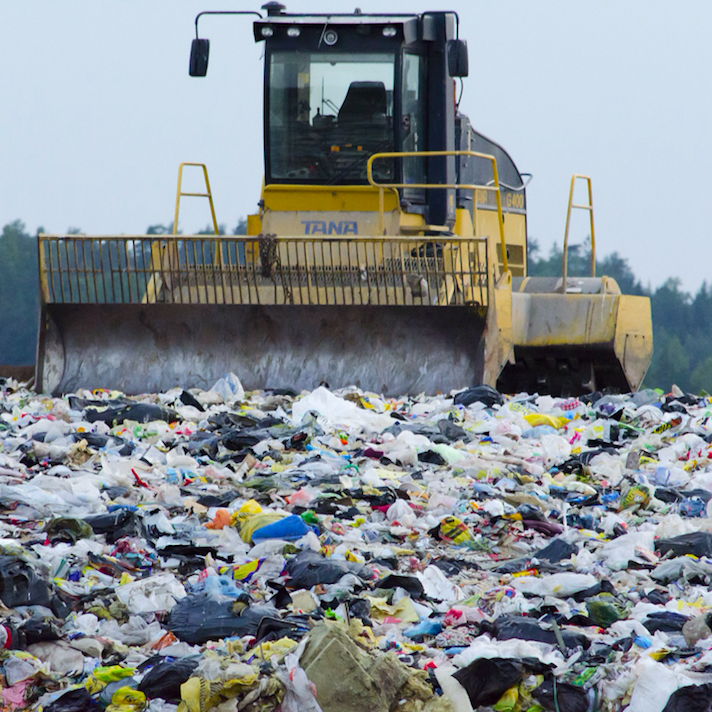
Mountains of waste are literally piling up in landfills around the world, and the organic material in those heaps of trash is a significant source of methane, a powerful greenhouse gas. That’s the bad news.
The good news is that emerging waste-to-energy technologies are making it more cost-effective to capture energy from waste. That provides businesses seeking more sustainable and energy-efficient processes with another opportunity to support clean technologies and help to build a more resilient global economy.
This is not your parents’ landfill gas project
Incinerating waste to generate electricity is commonplace, as is capturing and re-using landfill gas as fuel. However, both of these waste-to-energy systems are becoming outdated as new, more sophisticated systems enter the marketplace.
One example of this transformation is the California-based company Sierra Energy. The company’s FastOx system takes on the challenging problem of reclaiming energy from a mixed-waste stream containing food and other organic wastes, as well as metals and non-organic materials, both of which are challenges typically present within municipal solid waste.
Biomass is another ideal feedstock for the FastOx system. It can also handle many other materials including auto shredder residue, railroad ties, medical waste, hazardous waste, tires, construction waste and industrial waste.
That all-encompassing strategy caught the eye of the U.S. Department of Energy, the U.S. Army and the California Energy Commission. All three agencies contributed funding for Sierra to develop the FastOx system through a demonstration facility installed in 2017 at Fort Hunter Liggett in Monterey County, California.
The company says the installation will help the U.S. Army and DoD reach their zero-waste goal, as well as decrease their risks, costs and carbon footprint resulting from the transport and disposal of trash.
How the Sierra Energy waste-to energy process works
Basically, the FastOx system works like a blast furnace. Instead of feeding in fuel, however, FastOx creates its own fuel from the organic material in the waste stream.
Steam and oxygen are injected into the bottom of this system, and shredded waste is fed into the top. When the waste reaches a temperature range of 300°F to 1,000°F, the system produces a mix of light gases and condensable hydrocarbons from the organic waste. As these hydrocarbons react with the steam and oxygen, the system produces temperatures up to 4,000°F.
The ultra-high temperature converts the remaining carbon into synthetic gas fuel (a.k.a. syngas) consisting mostly of carbon monoxide and hydrogen, which makes the process self-sustaining.
Due to the high heat, metals and other inorganic compounds melt without producing nitrogen oxide and other toxic byproducts.
In addition to recovering solid materials, the system also recovers carbon monoxide and hydrogen, both of which can be used as fuels.
According to Sierra Energy, FastOx can process 20 tons per day of municipal solid waste and biomass, producing electricity and diesel fuel that is 20 times cleaner than the California’s fuel standard.
Next steps for waste recovery
The taxpayer-funded kickstart worked as intended, enabling Sierra to catch the interest of private sector investors.
Last month, the company received $33 million in Series A funding led by the clean tech investment group Breakthrough Energy Ventures, funders of which include Bill Gates and other leading global investors.
Additional investors include Cox Investment Holdings Inc., BNP Paribas SA, Twynam Investments, Formica Ventures and The March Fund I LP.
Think globally, act locally
By providing businesses with a way to divert their waste into useful products, systems like FastOx take a local issue and scale it up so that the outcome an become an important part of global action taking on climate change.
According to the World Bank, the amount of global waste is expected to grow to 3.4 billion metric tons by 2050, at a pace far faster than what most experts project the world’s population will grow.
More than a third of this waste is disposed in landfills, and only 8 percent of landfills are currently fitted with landfill gas collection systems.
Here in the U.S., waste management is the third-largest source of human-related methane emissions, behind only energy production and agricultural operations, according to the U.S. Environmental Protection Agency (EPA).
Considering the urgency needed to accelerate climate action, the pressure will increase on U.S. businesses to decarbonize their waste streams as well as their supply chains. Fortunately, it seems that new technology is bringing the solution to hand.
Tina Casey also contributed to this report.
Image credit: Pasi Mäenpää/Pixabay
To Mine or to Preserve: Aravali Hills in India Pose an Economic Conundrum


When picturing the Aravali Hills of northern India, images conjured include a lush range with still lakes, unique local architecture and even leopards. Amongst picturesque scenes, however, there are also searing images of hillsides marked by desertification. Mining and quarrying have transformed this region’s landscape.
In recent years, India’s Supreme Court has stepped in to protect the hills. First in 2002, they banned quarrying within a 10-mile-long area about 40 miles from New Delhi. Second, just last year in 2018, the Court-appointed Central Empowered Committee (CEC) released a report detailing the current condition of the Aravalis.
A model of unchecked, unsustainable development
The Committee found that 31 of the 128 hills located in the Aravali range have disappeared due to illegal quarrying over the last 50 years.
Shocked by the results of the survey, the Supreme Court ordered the state government of Rajasthan to stop illegal mining in the range within 48 hours. The state has claimed that it has issued notices ordering companies to appear in court in addition to registering illegal mines.
Even with repeated Supreme Court intervention, however, the hills remain in danger.
“Illegal mining continues despite the Supreme Court ruling. Trees are being felled indiscriminately. The wildlife is being killed to capture the forest. Mountains are being broken. Scanty rainfall has further aggravated the danger of desertification of Delhi,” Jitendra Bhadana, founder of the volunteer group, Save Aravali, tells News18.
“No Aravali, no Vote” is the chant of people protesting the passing of a new bill in Rajasthan’s neighbor state Haryana that opens 33 percent of forested area to development and mining. The Supreme Court, again, stepped in on the Aravalis’ behalf with a stay order on the bill’s implementation.
Developers claim that their motives are pure. They say the resources of the Aravalis should be used for the good of the people.
“If they are not being used to house people, what is the use of mountains?" Girdhari Singh, the owner of the Creative Projects & Contracts construction company, asks the German news service Deutsche Welle.
Do living hills in India offer value for citizens?
It can be hard to see the value of the Aravali Hills when they can’t speak for themselves.
Especially being so close to New Delhi, the capital of India, the Aravalis provide ecosystem services — above and beyond its rocks and minerals — that are vital to residents. To answer Mr. Singh’s question, there are three services that are most endangered by mining activities: offsetting pollution, preventing desertification and providing clean water.
Not only do mining activities release harmful particulate matter into the atmosphere but deforesting vast areas of greenery exacerbates the pollution problem in urban areas.
"In terms of air quality, the National Capital Region, especially the Gurgaon-Delhi belt are currently the worst polluted areas in the world," Chetan Agarwal, a senior fellow at the Centre for Ecology in New Delhi who researches the range, tells Deutsche Welle.
Agarwal adds that the Aravalis "basically act as green lungs and help reduce the air pollution."
The Aravali Hills, whose name means “wall of stone or rocks,” also provide protection from winds that would worsen desertification in the urban regions beyond the mountains. Winds have increasingly surged toward India’s National Capital Region because the mountains no longer shield the plateau - and those winds contain sand and dust that can harm human health, according to Business Insider.
The hills also replenish groundwater for towns in the plains. Mining threatens the purity of that water and alters microclimates so that the Aravalis now receive less rain than they used to.
This is not to mention the ecosystems and flora and fauna that are displaced, harmed and killed by mining activities.
Protesters demand environmental protection
The situation in the Aravalis is one of business interests overpowering the interests of the people.
The state governments have been acting more on behalf of commercial interests than the needs of citizens, despite the risks these activities pose toward cities and people.
Rajasthan state, for example, is receiving a royalty of Rs 5000 crore (the equivalent of approximately US$720,000,000) from mining companies, according to the Times of India.
Protesters are demanding that the laws of the states protect the natural areas they rely on for clean water and air.
In cases like this, developers and miners are unable to see the external costs of their activities, and how these externalities even affect their very own businesses and individual wellbeing.
The question must be asked. Will quarrying and developing be booming industries in cities that have become toxic to their people?
The government has to add the proper checks and balances for everyone involved to succeed. Thankfully, the Supreme Court has been able to step in time and again to act on behalf of citizens.
And the grassroots efforts of protesters and groups like Save Aravali have had an awakening effect. The recently formed Jannayak Janta Party has included environmental degradation, including protecting the Aravalis, into its agenda. This was a first for India.
Image credit: Nataraja/Wiki Commons
America’s Transportation Infrastructure Act a Plus for the Environment


In today’s climate of political polarization, opportunities to pass important bipartisan legislation are vanishingly rare. However, infrastructure spending has often been recognized as an area where cooperation on both sides of the aisle might be possible, and this week the Senate Environment and Public Works Committee voted unanimously to pass the America’s Transportation Infrastructure Act (ATIA).
Repairs for now, and a look ahead to the future
What makes this achievement most satisfying is that as well as authorizing investments to maintain and repair America’s aging roads and bridges, the act lays out clear provisions which recognize the need to mitigate the effects of climate change as well curb carbon emissions, while making our environment safer for humans and wildlife alike.
At the high level, the bill provides $287 billion in highway spending from the Highway Trust Fund over five years, 90 percent of which will be distributed to the states by formula. The effort in crafting the bill was led by committee chairman John Barrasso (R, Wyoming) and ranking member Tom Carper (D, Delaware).
In an co-authored opinion piece written by Barrasso and Carper for CNN this week, they note: “nearly 200,000 miles of major highways require repairs” adding, “we also have more than 47,000 bridges that are deemed structurally deficient.”
It is, of course, a well known fact that necessary investments have, for years, been deferred in modernizing the country’s woefully aging infrastructure but in addressing it now, it is encouraging that the bill’s provisions are couched in the context of today’s reality. The authors state: “Our climate is changing, and we recognize that. We also recognize the need to reduce carbon emissions from our transportation infrastructure. Dedicated funding and new incentives in our legislation will help states reduce their total transportation emissions.”
Three things to know about the America’s Transportation Infrastructure Act
Here are some of the ATIA’s key environmental provisions, and how they can have a positive impact on various industries:
First, there are carbon emissions incentive programs, including $3 billion distributed to states over five years for projects which lower highway-related carbon emissions. Also, an additional $500 million over five years is available which states can compete over, to fund improvements to per-capita emissions.
Second, funding will be made available to states to help reduce traffic congestion and reduce truck idling at ports. And in conjunction with other legislation, funding will be available for efforts to support carbon capture and sequestration research.
Finally, and perhaps one of the most exciting provisions, are grants for building out the nation’s alternative fuel infrastructure. The bill makes provisions for a competitive grant program, funded to the tune of $1 billion, for states to build hydrogen, natural gas and electric vehicle (EV) charging infrastructure along designated corridors.
A boost for electric vehicles?
As reported by Julia Pyper writing for Greentech Media, Nick Nigro, founder of the EV industry research firm Atlas Public Policy, indicates this will likely be a boost for the growing market for EVs: "A $1 billion infusion from the federal government into EV charging infrastructure will send a strong market signal to the private sector that the United States is serious about transportation electrification," he said.
Indeed, senators Barrasso and Carper agree, writing in their CNN op-ed that the inclusion in the bill to build out alternative fuel infrastructure is designed “so that drivers of these vehicles do not experience "range anxiety" that their car could leave them stranded. Drivers of electric, hydrogen, and natural gas powered cars will now have access to these power and fuel stations.”
Despite the nod to hydrogen and natural gas, we suspect electrification will likely be the main beneficiary of the $1 billion funding as EVs are, by far, currently the alternative-fuel vehicles with the most traction. Pyper’s article also notes that the bill augments investments already earmarked by Volkswagen following “Dieselgate”, which along with planned utility company investments will mean $6 billion in EV charging infrastructure will be available in the near term. In the long term, better EV infrastructure will reduce the friction in EV ownership and likely generate further private investment as the popularity of these vehicles builds.
Highway safety provisions feature in the bill too. $500 million per year will be distributed to states to support projects lowering driver and pedestrian fatalities, while another $250 million over five years will go towards reducing wildlife-vehicle collisions, in part by funding wildlife crossing structures.
Getting people out of their cars
Beyond motorized transportation, the bill is also good news for people trying to get out of cars altogether. People For Bikes, a cycling advocacy organization notes the passing of ATIA makes funding available for bike lanes, paths, trails, and bridges to the tune of at least $850 million in the first year.
So, there is a lot in the bill to recommend it from an environmental perspective. Detractors might note, however, that a key element in the ATIA is cutting red tape, under the “One Federal Decision” policy. This means that there is, for example, a two-year goal for completing environmental reviews for highway projects, which no doubt will raise concerns that this sets an arbitrary timeline which will not always be appropriate.
It is also, of course, not a done deal. Though the bill has passed out of the Senate committee, it now has to pass through the full Senate, the House, and then be signed by the President, though according to this short piece from Bloomberg Environment, the president has endorsed the bill on Twitter.
Another critical hurdle to overcome is in securing the dollars to fund the bill. Still, the fact that the ATIA passed the Senate committee with a unanimous 21-0 bipartisan vote and that it’s passed this milestone with strong environmental provisions, is an encouraging start. Perhaps Infrastructure Week will finally arrive at last.
Image credit: New York City Department of Transportation/Flickr
Finalists Named for CR Magazine 2019 Responsible CEO of the Year Awards
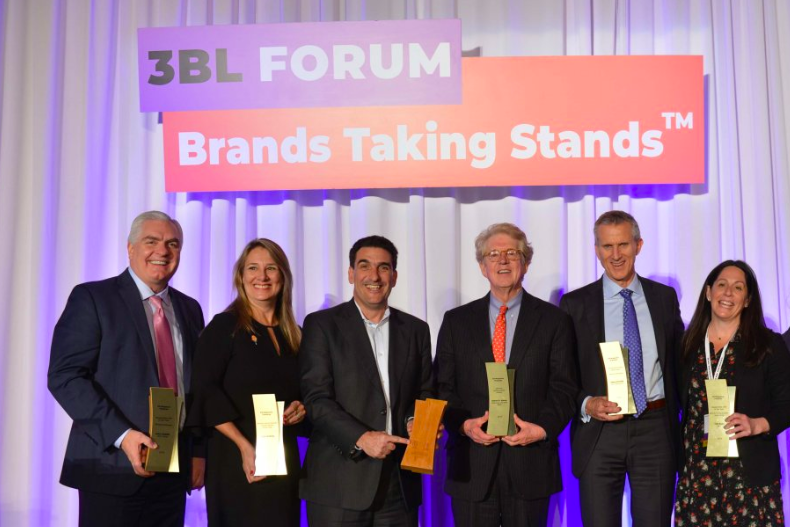
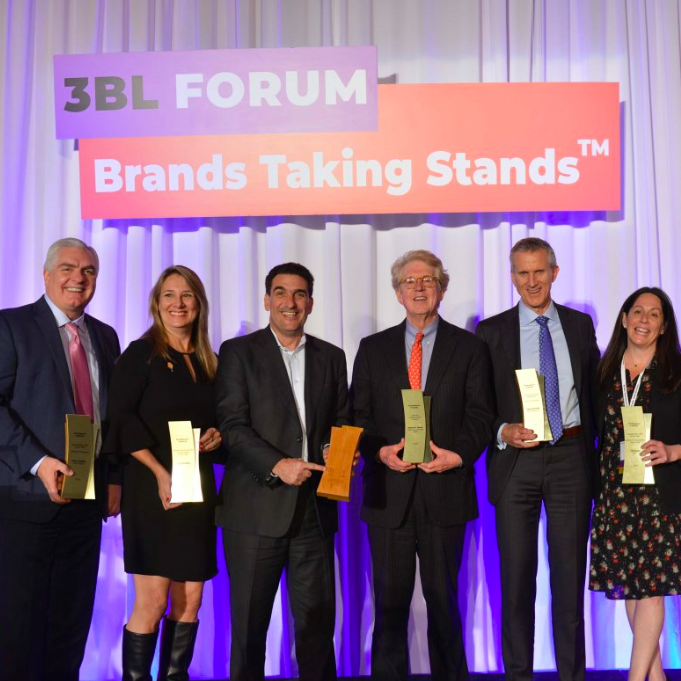
This week, Corporate Responsibility (CR) Magazine has announced the finalists for its 12th annual excellence in leadership awards. The awards are given to corporate leaders who are committed to a forward-thinking environmental, social, and governance (ESG) agenda. In addition, these awards are open to those who have taken the bold steps necessary in pushing ahead on the most urgent conversations of today.
The awards will be presented during a dinner at this fall’s October’s 3BL Forum, the theme of which is “Brands Taking Stands - What’s Next.” The event will be October 29 and 30 at MGM National Harbor in Maryland, only minutes from Washington, D.C.
The finalists for the 2019 Responsible CEO of the Year are:
- Sylvia Acevedo, CEO at Girl Scouts of the USA
- Jeffrey W. Eckel, President & CEO at Hannon Armstrong
- Brad MacAfee, Chief Executive Officer and Senior Partner of Porter Novelli
- David Taylor, Chairman of the Board, President and Chief Executive Officer at Procter & Gamble
- Hans Vestberg, Chairmain and CEO, Verizon
“Some CEOs deliver strong financial performance, period. Others are adept at keeping shareholders happy while also leading their organizations to be forces for good by championing a strong environmental, social and governance agenda,” said Dave Armon, CEO of 3BL Media and publisher of CR Magazine. “Our panel of former Responsible CEO winners and our team at 3BL Media are delighted to honor these finalists for the impact they have made and their ongoing leadership in ESG.”
In addition to the Responsible CEO of the Year Awards, CR Magazine's 9th annual Lifetime Achievement Award will recognize a CEO who stands out with the risk-taking, vision and pioneering spirit leading to a strong track record of ESG achievements over the course of his or her career.
All award winners are nominated by members of the corporate responsibility and sustainability community; the nominees in turn and are then awarded by an independent panel of judges composed of previous Responsible CEO winners as well as other recognized leaders in the business and nonprofit communities.
Last year’s Responsible CEO of the Year awardees (shown above) were:
- Daniel Amos, Chairman and CEO at Aflac
- Tim Ryan, U.S. Chairman and Senior Partner at PwC
- Steve Rendle, President and CEO at VF Corporation
- John Snyder, President and CEO at BCD Travel
- Mariano Lozano, president and CEO at Danone North America
- José Andrés, Chef/Owner, ThinkFoodGroup and Minibar by José Andrés, and Founder, World Central Kitchen, who CR Magazine awarded as Humanitarian of the Year
Join us at 3BL Forum: Brands Taking Stands – What’s Next, at MGM National Harbor, just outside Washington, D.C., on October 29-30, 2019. The two-day event will continue our newly established tradition of bringing corporate leaders together on a fast-paced main stage, keenly focused on the ‘why’ and ‘how’ behind their thinking as we navigate a rapidly changing business environment. Receive a 25 percent discount using this code PUNDIT2019AUGUST when you register here during the month of August, 2019.
Image credit: 3BL Forum
Renewable Energy Sizzles, Natural Gas Fizzles


Businesses seeking renewable energy to fuel their operations received some good news from the U.S. Energy Information Agency (EIA) last week. In its latest update, EIA noted that renewables have begun to catch up to coal for a share of the U.S. power generation market. If the trend continues, renewables will be able to claim the second-place slot, behind only natural gas.
That’s a stunning reversal of fortune in just a few short years. Coal played a dominant role in U.S. electricity generation through much of the 20th century. As recently as 2015, coal was still edging out natural gas for the position of power generation leader, and renewables were lagging far, far behind.
Coal fortunes continue to fall as renewable energy rises
The latest EIA monthly report on electricity is dated May 2019 and was released on July 24. It demonstrates how much the U.S. energy landscape has changed over the past four years.
From January through May of 2019, coal power plants under the umbrella of electric utilities, independent producers and other sources accounted for 391,567 gigawatt-hours of electricity generation. That’s down from 440,167 GWh during the same period last year.
As would be expected, natural gas easily beat coal during the first five months of 2019, at 560,350 GWh. However, the real story is the growth of renewable energy.
For the first five months of 2019, renewables—including conventional hydropower, biomass, wind, solar and geothermal—were closing in on coal, with 317,731 GWh generated.
May was an especially strong month for renewables compared to coal. The organization Sun Day Campaign took a closer look at the numbers and noted that renewables edged out coal for the month of May.
The totals vary depending on which categories of producers are included. According to Sun Day’s metric, renewables claimed 73,779 GWh in May compared to 71,988 for coal.
A long, hot summer for coal
Due to regional and seasonal energy use patterns, renewables may lose their lead over the short term, but EIA expects renewables to put in a strong showing this summer. In May, the agency issued a forecast for the summer of 2019 under the somewhat ominous headline, “EIA expects less electricity to come from coal this summer as natural gas, renewables rise.”
EIA anticipates a slight decrease in electricity demand this summer, from June through August, compared to 2018. The agency forecasts that coal will be especially vulnerable, sliding to a 25 percent share of U.S. electricity generation for the three-month period.
By way of comparison, in the summer of 2015, coal’s share was 35 percent.
Natural gas will once again top coal by a wide margin this summer. According to the forecast, gas will account for 40 percent of U.S. power generation for the summer of 2019, up slightly from its 39 percent share in 2018. Meanwhile, EIA expects hydropower and other renewables to account for a respectable total of 16 percent for the summer of 2019, up slightly from last year.
Renewable energy lowers the boom on coal and natural gas, too
As for the forces behind the rapid growth of the U.S. renewable energy sector since 2015, early large-scale adopters in the business community can claim a good share of the credit.
Other factors to emerge recently are economies of scale, technological improvements, state policies supporting community choice aggregation and new financial instruments.
Now that the market is maturing, some utilities are also driving the demand for renewable energy in order to provide their customers with competitive rates. One good example is Missouri’s Liberty Utilities-Empire District. Midwest Energy News profiled the company earlier this week and noted that it has made a sharp pivot away from its earlier projections for electricity generation.
The previous plan was to rely primarily on natural gas and coal for the next 10 years, then gradually add relatively small amounts of both wind and natural gas. That changed after Canada’s Algonquin Power & Utilities Corp. acquired the utility in 2017, through its Liberty Utilities branch.
Liberty-Empire’s plan for the future is now a much more ambitious one, as described by Midwest Energy News:
“In its new 2019 integrated resource plan, Liberty-Empire In it, Liberty-Empire proposes to retire the 200 MW Asbury coal plant by the end of the year and over the next two decades add hundreds of megawatts of wind, solar and storage.”
Liberty-Empire is expecting the combination of solar, wind and energy storage to save money over coal power. That same dynamic is also in play for rural electric cooperatives in Minnesota and Oklahoma, which have begun looking at “hybrid” wind and solar power plants to provide for both low cost and grid reliability, as well as a long-term alternative to coal and natural gas.
Two steps forward, one step back
On the other end of the renewable energy spectrum, last week Ohio lawmakers established a new energy policy framework that supports coal and nuclear at the expense of renewables and other resources.
It’s yet another demonstration of the impact that state-level policies can have on the pace of renewable energy adoption in the U.S., regardless of White House policies. That dynamic was in force during the Barack Obama administration and it also holds true under the current occupant of the Oval Office.
Fortunately, state barriers are beginning to fall alongside the cost of renewables and other clean technology. The new Ohio policy could be the last gasp of a dying era.
Image credit: Aniek Wessel/Unsplash
Italian Apparel Brand Napapijri to Launch Recyclable Jacket
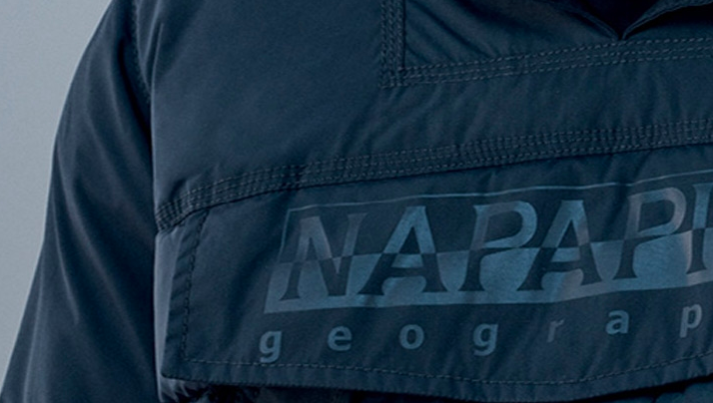
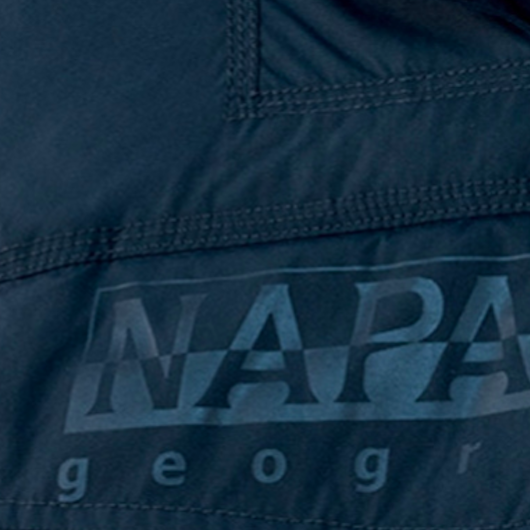
A jacket made to be remade is hitting the market this fall.
The Italian clothing company Napapijri has created the Skidoo Infinity jacket, constructed completely of recycled plastic fibers. The body is sewn from Econyl Regenerated Nylon—comprised of various scrap plastics, including recycled fishing nets—and is produced by Italian nylon manufacturer Aquafil. The jacket’s interior and side panels are made up of Nylon 6 (known in the textile industry as polycaprolactam, a polymer), which takes the form of filament yarns and staple fiber yarns. The garment is a sustainable version of the Napapijri’s popular Skidoo Anorak, which the company has sold since 1987.
Napapijri plans to release Skidoo Infinity jackets for men and women by Oct. 21 in more than 2,300 of its stores located across 40 countries.
When customers buy the jacket, they can register with Napapijri—and in two years, if they no longer want it in their wardrobe, they can return it to the company. Napapijri will recycle the jackets into new raw materials and products. Using just one type of material in the jacket’s design makes construction more efficient and makes the recycling process easier; the fibers are less likely to degrade when they are upcycled. Napapijri researchers spent about three years perfecting the design and fiber-mix for the Skidoo Infinity.
The jacket is among the latest entries in Napapijri’s sustainable portfolio. Since 2017, the company’s garments have been fur- and down-free. Napapijri has also developed a one-thread method of constructing the parts of certain garments that reduces material waste, water and chemical use by 30 percent.
Napapijri is part of the VF Corporation, which also owns clothing giants Vans, Timberland, The North Face and Dickies—and, with that portfolio of brands, has earned its sustainability chops. Two years ago, VF Corp. signed the 2020 Circular Fashion Commitment, pledging that European Timberland and The North Face stores would expand the volume of used clothing and shoes they collect by 10 percent. By 2020, VF’s goal is to train all of its European product designers in circular economy principles.
“Environmental protection has always been one of Napapijri’s priorities," Vicki Bohlbro, senior director of global marketing at Napapijri, told the Fashion Network. "Now more than ever, we are aware of the urgent issues we need to tackle collectively. Skidoo Infinity is the result of our efforts in combining design, sustainability and innovation to inspire, through a circular process, a change in the role that [the fashion] industry must play for the preservation of the planet and the human race."
VF is also researching ways of renting clothing and providing services to customers. “We're building these models as we speak," Anna Maria Rugarli, sustainability and senior director for VF Corp., said in a recent interview with edie.net. "We are shifting from just making products to also providing a service to consumers. The way it will happen will depend on the product and the brand that we are setting them up for.”
In addition, the company plans to use the Material Sustainability Index (MSI) to publicly measure the environmental impact of its material production. The MSI was developed through the Sustainable Apparel Coalition (SAC), an international group of retailers focused on the sustainable production of clothing, textiles and footwear.
“We are initiating that by becoming one of the first apparel and footwear companies to use the standardized industry measurement tool as a guide to help us improve the average impact of our key materials by 35 percent by 2025," according to a statement from VF Corporation. "It’s a first step toward what we hope will become a way to standardize and compare impacts across our industry.”
Image credit: Napapijri
Ingersoll Rand: How a Legacy Company Stretches the Limits of Sustainability
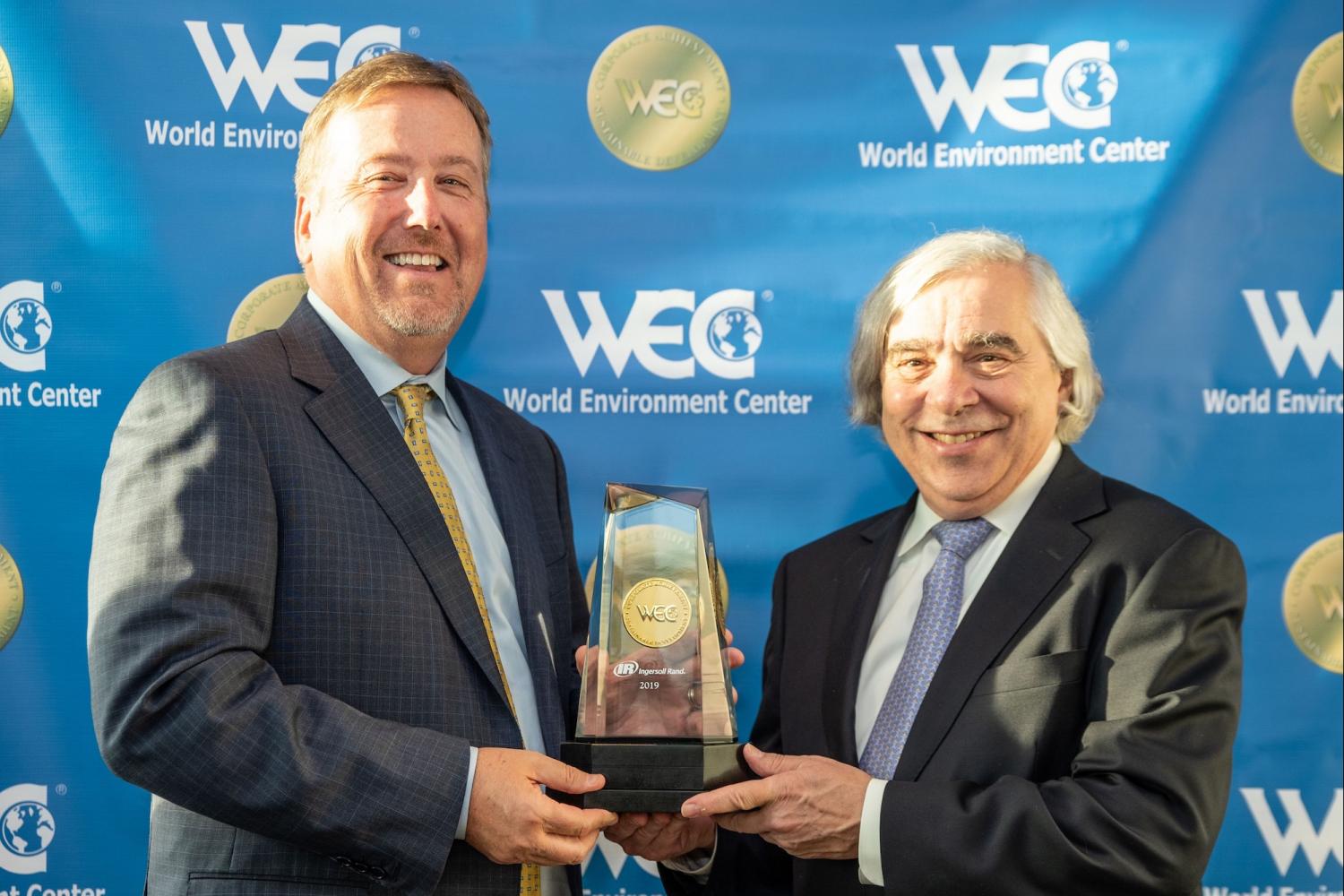
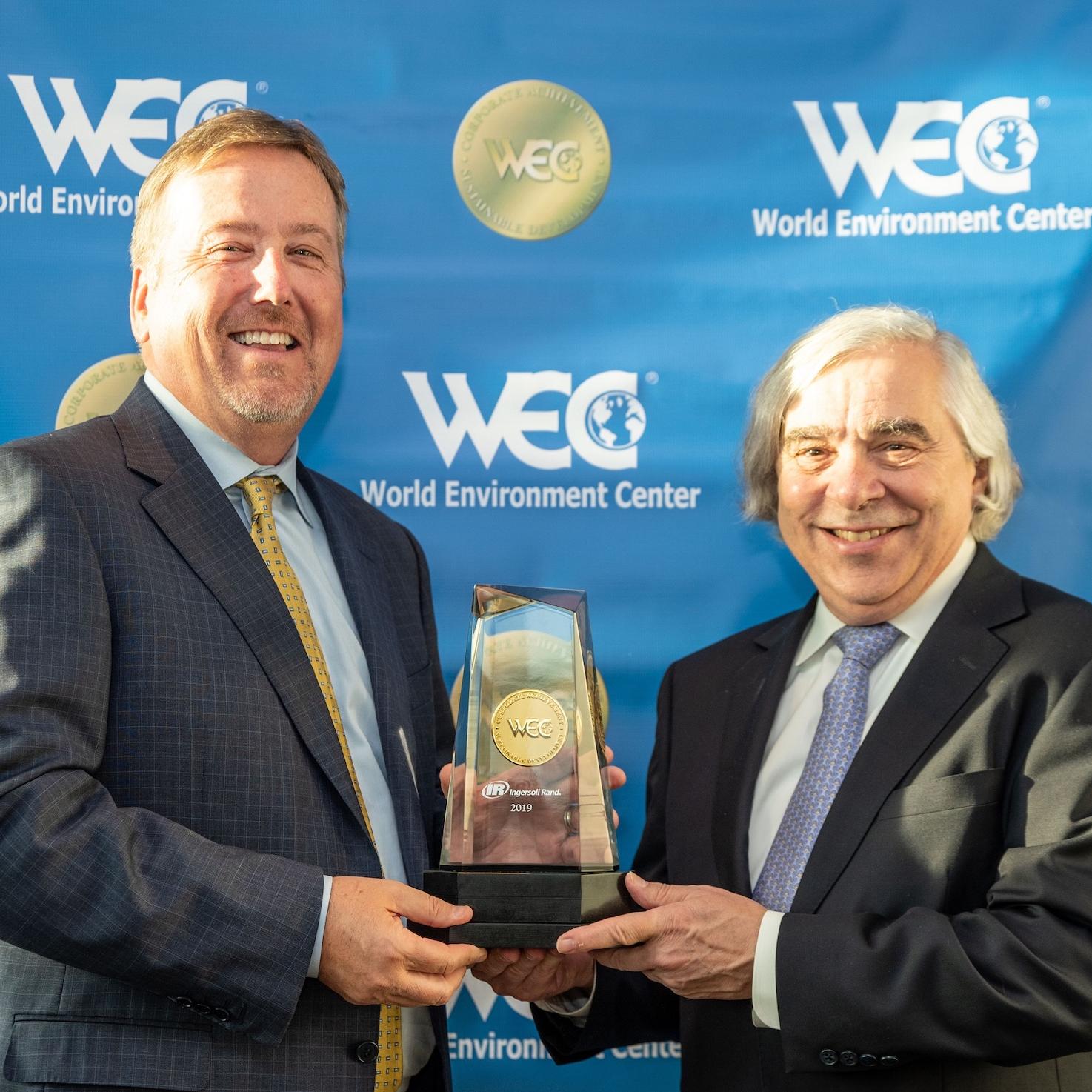
Image: Former U.S. Secretary of Energy Ernest J. Moniz (right) presents Ingersoll Rand CEO Michael W. Lamach with the World Environment Center's Gold Medal Award.
Ingersoll Rand is the kind of company you’ve probably heard of but aren’t quite sure what they do. The global industrial manufacturing and services company got its start in the 1870s producing industrial drill bits and air compressors. In 1925, it released the first commercially successful diesel electric locomotive engine. And, with its ongoing leadership in heating, cooling and building automation, Ingersoll Rand remains a leader in the industrial sector to this day.
Most interesting for TriplePundit readers is how an industrial company with its feet firmly planted in the 19th century informs other, much younger companies and sectors on sustainability.
Old-school sustainability reimagined for today
We recently spoke with Scott Tew, executive director of the Center for Energy Efficiency & Sustainability at Ingersoll Rand. The occasion of our conversation came on the heels of the company receiving multiple recognitions for its sustainability work. In 2018, Ingersoll Rand won the prestigious U.S. Chamber Foundation's Best Environmental Stewardship Award.
But wait, there’s more! Earlier this year, three other organizations called out Ingersoll Rand for its work across all three tiers of triple-bottom-line accounting. Fortune Magazine’s annual report card on corporate reputation named Ingersoll Rand as one of the World’s Most Admired Companies. The criteria for being thusly admired includes investment value, quality of management and products, social responsibility, and the ability to attract value across its leadership and workforce.
Soon after, Corporate Knights included the company in its list of the 2019 Global 100 Most Sustainable Corporations in the World index. Next came Forbes Magazine, recognizing Ingersoll Rand among America’s Best Employers for Diversity. Finally, in February, the World Environment Center awarded Ingersoll Rand its 2019 Gold Medal Award for International Corporate Achievement in Sustainable Development.
We asked Tew how all of this rapid-fire recognition reflects Ingersoll Rand’s long-term strategy. He spoke of the need to exceed expectations. “Stretching beyond and delivering more than expected of an industrial company is crucial when you’re working to create measurable change in your sustainability efforts and environmental impact,” he told us.
But Tew pushes back at the characterization of sustainability and diversity as merely business strategies. “It is our business,” he said firmly. “It touches everything we do—from how we engage our people, to how we innovate around our products, our supply chain, our operations and everything in between. It’s important that we ‘walk the talk’ both environmentally and socially, and we use the same solutions internally that we recommend to our customers. Sustainability is deeply integrated into who we are as a company, and these external recognitions are validation that we are leading.”
More than just looking good
Sustainability is too often tied with specific actions taken largely out of context. Recycling is commendable behavior, for instance, but is it the best choice among other options, such as reuse or better efficiency? Without authentic motivation, companies and people fall short when their focus is solely on “commendable behavior.” It's too much “how” and not enough “why.”
The “why” for Ingersoll Rand comes from a sense of responsibility to its leadership role and position in the value chain. “As a global, leading manufacturer of products that heat, cool, and automate buildings and transportation, Ingersoll Rand is uniquely positioned to help address some of the world’s most pressing environmental challenges, including climate change," Tew told us. “This is especially true for our customers, who are faced with managing building emissions, which are some of the largest indirect contributors to [global greenhouse gas emissions], and who are also service-oriented and conscious of operational costs.”
The challenges faced by its customers inform the company’s essential business logic of creating shareholder value. That logic coincidentally dovetails with Ingersoll Rand’s commitment to social responsibility—an intersection of short-term practicality and long-term values, evolving organically as markets adapt to changing values across the supply chain.
As is apparent with less motivated companies, it’s one thing to jump on the marketing bandwagon, another to formalize and announce a commitment, and yet another to have any idea of how to do it. Sometimes you have to make it up as you go along.
Sustainability goals: The chicken or the egg
Not exactly saying they “made it up,” Tew refers to starting out in 2014 on an as-yet-unseen course toward its sustainability goals—including a pledge to reduce its greenhouse gas footprint by 35 percent by 2020, compared to a 2013 baseline. “We did not have a clear path forward to the product solutions necessary to meet our 2020 targets,” he said, “so the most challenging aspect was to identify and commercialize ... more efficient designs.”
Illuminating that path began by “engaging with key stakeholders,” another amorphous concept that works—when clearly defined. For Ingersoll Rand, the process is framed in its Materiality Assessment, which defines the terms for measuring progress on its 2020 emissions reduction targets.
In pursuit of its emissions goal, the company targeted a 10 percent increase in energy efficiency by 2020, from a 2013 baseline—which it achieved last year. "We put together an aggressive plan to meet our targets, and our employees found creative ways to accelerate the work to help us achieve that goal two years early," Tew said. "They used the target as a motivating force for investment in lighting retrofits, HVAC optimization and other energy-saving investments.”
The company has also pledged to help its customers reduce their own emissions by halving the GHG footprint associated with its refrigerant products. “The research and development commitment has significantly facilitated the path forward," Tew explained, "but it has been challenging because the refrigerant solutions we identify will impact the entire industry from a service perspective."
Rising expectations from stakeholders and increasing urgency around climate change
With growing awareness about environmental issues across most sectors of business and society, the pressure is on for somebody to do something about it. “The expectations of us and the industrial sector as a whole are rising,” Tew told us. “To jump ahead of those expectations, we are stretching even further than before by setting bigger climate and sustainability goals—pushing ourselves while at the same time hoping to inspire and encourage our peers to do the same.”
Clearly, dealing with climate change presents no easy path or instantaneous course correction, but the time to get started is now, Tew insisted. “The clock is ticking on climate change,” he said. “As a world, we are facing an unprecedented urgency to bend the curve of climate change acceleration. So, we are working closer with external partners to deliver bigger solutions that coincide with the growth of urbanization and the middle class, for example.”
Climate action can't happen in a vacuum
It may sound counterintuitive, but there is a danger in simply focusing on climate change without considering its interconnected causes. Silos have their place, but rarely in environmental or social policy. This is why understanding and adopting a triple bottom line is crucial. And Tew underscores the comprehensive nature of transforming Ingersoll Rand into a sustainable, triple-bottom-line business.
“We also don’t just see ‘sustainability’ through the lens of environmental and climate stewardship,” he explained. “Sustainability is for the long-term success of our business, the sustainability [of] our communities, people and society. Increasingly, we are looking at sustainability through the lens of social parity. For example, we are working toward gender parity across the company and working to ensure our sites and facilities mirror the demographic makeup of the areas in which they operate.”
Measuring what matters: Barometers of success
It’s nice to receive awards and recognition for important social and environmental causes. The danger is when the honors and praise are the goal. Better to think of these recognitions as a barometer: a way to gauge what works and what doesn’t. With that, others can model what does work.
Ingersoll Rand’s barometer is rising, as reflected in its recent string of public endorsements and awards. But it doesn’t mean the work is done—it means the company is well on the path that stretches far into the future. Surely the path requires iteration and adjustment. As long as Ingersoll Rand maintains the focus reflected by the leadership of Scott Tew and his colleagues, it is a path for others to follow.
Image courtesy of Ingersoll Rand
The Wayfair Effect: Companies Find Their Voices Rebuking Racism


Top executives in the U.S. business community are well versed in advocating for tolerance, inclusion and equal rights. However, they are still struggling to find a voice when those mores are broken by the chief executive of the nation’s government. In particular, the issues surrounding the president’s racism have placed business leaders in a conundrum, as executives at Wayfair experienced last month. They are reluctant to denounce any elected official by name, but they are also losing the opportunity to demonstrate that statements of corporate social responsibility bear real weight in the real world.
Nevertheless, there are signs that some business leaders are ready to confront the president on racism, as a matter of both brand reputation and employee loyalty.
Wayfair, social responsibility and employee activism
When workers at the home furnishing company Wayfair staged a walkout in downtown Boston on June 26, it was a vivid illustration that brands stand to lose both their reputation and employee loyalty if they fail to respond to growing public concerns over the president’s racist statements and domestic policies.
The Wayfair walkout was in protest of the company’s role in providing mattresses for a federal detention facility housing immigrant children in Texas. A group of employees first raised the issue in a letter to top executives at the firm. After their employer dismissed their concerns, they organized the walkout.
Employees at other leading companies have also advocated for action in opposition to the president’s policies, but these have stopped at the writing stage. The Wayfair employees took their action up a level by, literally, taking it to the street.
The Siemens solution: Call racism by its name
Executive leadership at Wayfair could have avoided a public demonstration by responding more proactively to employee concerns. In that regard, Siemens CEO Joe Kaeser has taken an important, proactive step to assure his workers that their employer pays attention to their concerns.
On July 20, Kaeser responded on Twitter to accounts in the German press regarding the president’s ad-hominem attacks on four female, nonwhite members of Congress. Without naming the president, he stated (via this rough translation):
“ . . . it depresses me that the most important political office in the world will be the face of racism and exclusion. I have lived in the USA for many years, experiencing freedom, tolerance and openness as never before. That was ‘Make America Great Again’!!”
How to tell it like it is
Although the reference to the current U.S. president was obvious, Kaeser—who has a long history of publicly denouncing racism and xenophobia—framed his criticism to strike a broader target. Rather than rendering an ethical or moral judgement on the president as a person, Kaeser simply gave voice to the widely held opinion that racism is a moral wrong, regardless of who occupies "the most important political office in the world.”
In doing so, Kaeser amplified the point that the U.S. children’s publishing company Highlights made in June, when it publicly criticized the president’s family separation policy on the basis of “human decency, plain and simple.”
Baltimore becomes a target
U.S. business leaders were largely restrained in their response to the president’s attacks on the four Congresswomen. A more recent development suggests that they lost that earlier opportunity to get out in front of the issue.
Last weekend, the president began targeting U.S. Rep Elijah Cummings of Maryland. In doing so, he disparaged both Cummings and his congressional district, including about half of the city of Baltimore (pictured above).
Baltimore has a significant majority-minority population including almost 63 percent identifying as black or African-American, according to the latest U.S. Census figure.
The attack on Cummings and Baltimore sparked a fresh round of criticism from elected officials and op-ed writers. Media stakeholders are also beginning to use words like “racism” and “racist” instead of “racially charged” to describe the president and his statements.
Still, the U.S. business community has been largely restrained.
Under Armour strikes back
As of this writing, the sole exception to the business community’s restraint has been Baltimore-based Under Armour.
Under Armour CEO Kevin Plank, like many other chief executives, initially expressed support of the new administration when the president first took office in 2017.
However, Plank’s expression of support for the newly sworn-in President occurred during the same period in which the President’s controversial “Muslim ban” sparked a national uproar. Plank was firmly rebuked by employees, customers and Under Armour spokesperson Dwayne “The Rock” Johnson.
Johnson staked out the moral high ground, explaining in on social media that “great leaders inspire and galvanize the masses during turbulent times, they don't cause people to divide and disband.”
Plank listened. Among other actions in 2017, he pulled Under Armour out of the president’s Manufacturing Council and launched the new We Will community engagement program. He also publicly criticized the president’s decision to pull the country out of the Paris Agreement on climate change.
That experience prepared Under Armour to respond quickly. Shortly after the president began his verbal attacks on Cummings and Baltimore, Plank used his personal Instagram account to repost the We Will launch video.
Narrated by an African-American voice, the one-minute video is a call for recognizing the grace, dignity and diversity of Baltimore. Without papering over the challenges faced by cities like Baltimore, the video is a call for civic unity.
The video also echoes the theme of unity expressed in a YouTube video the company released around the same time, which declares that “sports will unite the world" and reinforces the company’s “United We Win” partnership with pro football player Kenny Stills.
Above all, the We Will video asks the question, “What will happen if we rose up together?”
What, indeed.
Image credit: Bruce Emmerling/Pixabay